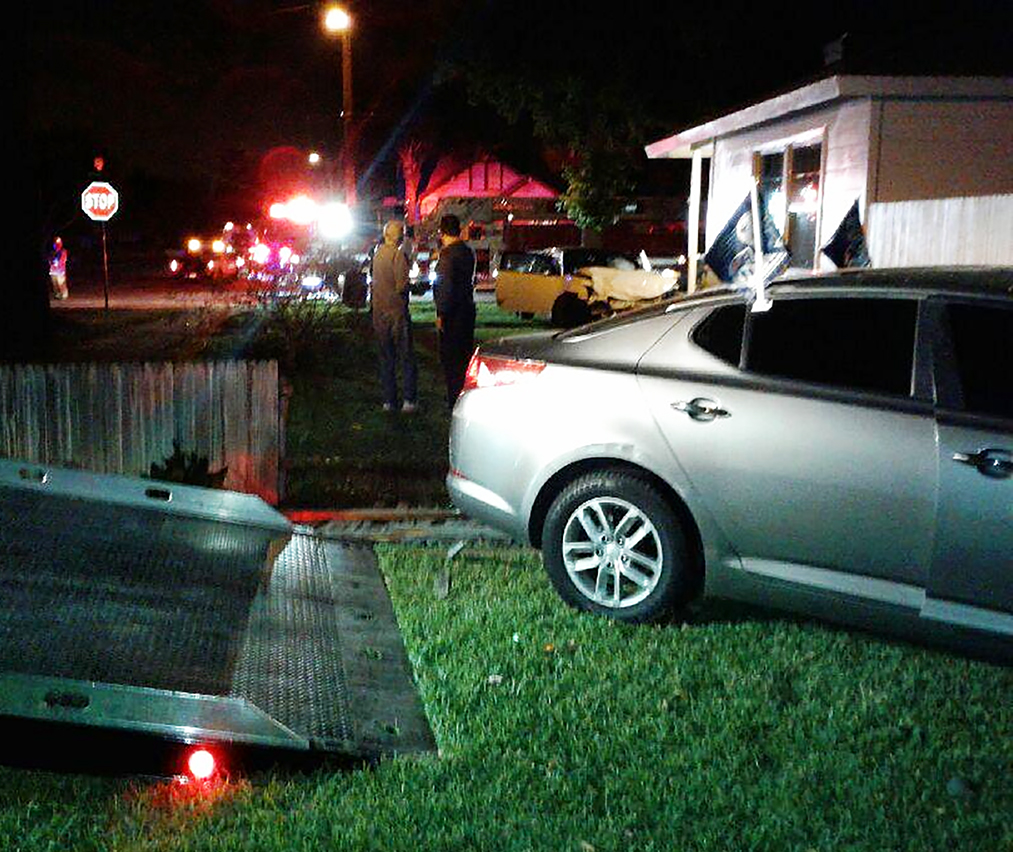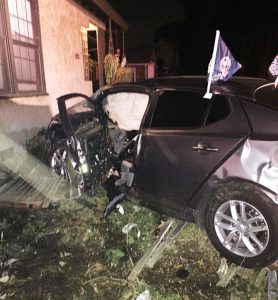In the spirit of famous activists like Ralph Nader and Erin Brockovich, La Verne’s Kate Shelley, supported by more than 100 of her fellow Second and Third Street neighborhood residents, showed up en masse at La Verne City Hall on Monday and persuaded the City Council to abandon a staff proposal that would have created dual northbound lanes to accommodate increased traffic along White Ave. (between Arrow and 6th St.) in favor of the local residents’ less-is-more plan to improve the busy thoroughfare by adding a center left turn lane and better striping to the current north and southbound lanes.
Further motions to calm traffic by introducing smart cross walks and bike lanes were put off until the proposals can be further studied and evaluated.
Before the meeting began, carolers, directed by Todd Helm, warmed the crowd with several holiday classics. Perhaps, it was these pre-council meeting festivities, which included the annual lighting of the Christmas tree, which helped take the edge off of what was expected to be a highly contentious stand-off between downtown residents and the City.
At issue is the increasingly unbearable volume of cars flowing north and south on White Avene. La Verne Public Works Director Dan Keesey reported that the volume of cars along White in downtown La Verne had increased from about 15,500 in 2002 to about 20,500 vehicles a day. With other major projects underway (Gilead) or on the drawing board (Gold Line), traffic is only expected to worsen.
As a result of the increased traffic, White has become a bottleneck for commuters and an almost impassable concrete river for residents living on both sides of the dangerous thoroughfare. On that issue, both the City and residents found common ground.
Although Keesey said White average averages a little more than six accidents a year, based on filed police reports, Shelley and her supporters said the number was easily double the city’s count. To underscore this larger total, resident after resident walked to the rostrum and shared some of their personal perils of trying to negotiate White Avenue as both drivers and pedestrians.
“I’ve seen six accidents in the last two months alone,” said Tim Morrison, countering the city’s official count.
Not in dispute have been Second and Third Street residents attempting to make left-hand turns out of the neighborhood who have seen their cars rear-ended and t-boned by rush-hour drivers. Other commuters racing through town at speeds of up to 70 mph have struck bicyclists and jumped curbs, crashing into living rooms, accidents that could have resulted in fatalities.
Eyewitness speakers taking their turn at the rostrum referred to White as a “speedway,” a “freeway” and a “slalom.” Another compared the asphalt artery to a scene out of “Bullitt,” the iconic Steve McQueen film that contains one of the most famous car chase scenes in history.
Because of the dangerous increase in traffic, residents on both sides of White expressed their feelings that they had been scared off and cordoned off from visiting the other side town. Residents east of White particularly complained that their access to the village had been walled off, leaving them feeling as if they were living on an island.
Shelley called the situation “a nightmare” and a daily game of Russian roulette. “Something you never want to see is a car front grill coming through your living room wall,” Shelley said.
The residents were united in presenting their less-is-more alternative, a proposal they believe will calm traffic and preserve the historic neighborhood’s quality of life. By slowing traffic with single, well-striped lanes and a center left turn lane — and eventually with bike lanes and smart cross walks — on-the-go motorists, they believe, will seek alternative streets to complete their north-south slog through town. Conversely, the city’s plan to create more traffic lanes was drafted to accommodate the growing volume of north and southbound commuters, many of whom now use White to travel between the 210 and 10 freeways.
Until a solution is implemented, White’s traffic problem will continue spilling into other city streets. Increasingly, savvy commuters armed with the Waze traffic and navigation app are steering clear of the White bottleneck by cutting across Second and Third Streets and turning up I Street. While the so-called rat-run has shaved seconds off drivers’ commutes, the shortcut has made the adjoining city streets less safe for neighborhood residents.
To lead the opposition to the City’s initial plan, Shelley emerged as the perfect choice to make the local residents’ voices heard. Not only does she live on the northeast corner of Third and White, offering her literally a front-row seat to the mayhem playing out on White Avenue, but when she was living in western New York, she organized a successful effort, joined by Greenpeace, to dismantle the smokestacks of an incinerating plant that was covering local residents with ash.
Although Shelley and her united front of eloquent supporters won a clear victory on Monday night, they didn’t get everything they wanted. The council and staff believed their proposals to calm traffic further by adding stop signs or stop lights on White would dramatically back up, rather than relieve, traffic. Mayor Don Kendrick who owns property within 500 feet of White Avenue had to recuse himself from any public discussion on the competing proposals.
After the final speaker had addressed the council and the last councilmember had shared his or personal view – some two hours later – a sense of relief filled the room.
Let Todd Helm’s carolers sing!





December 9th, 2016 at 9:18 am
Exceptional article! Thank you for your comprehensive and well-written coverage of this issue, which was indeed a beautiful testament to what happens when sharply-led citizen concern and activism is met by caring governance. Much appreciated!